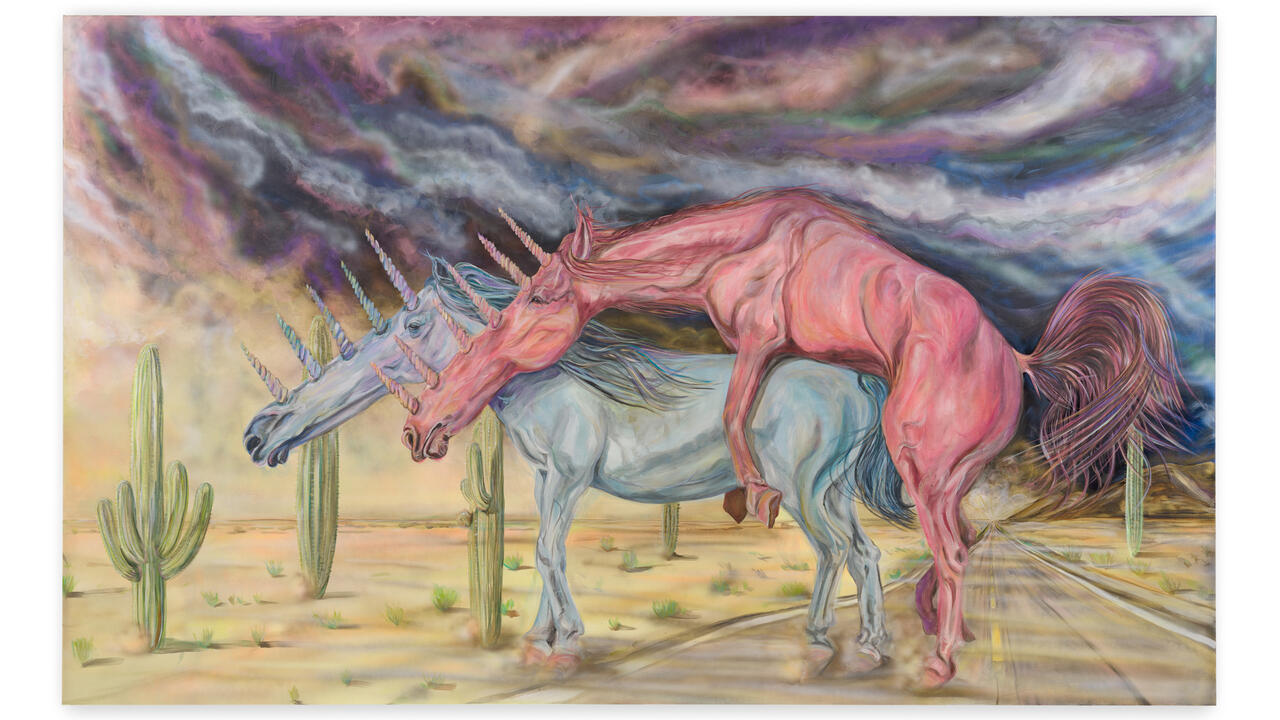Ursula von Rydingsvard At The Height Of Her Powers
The artist shows a muscular blend of figuration and abstraction at Galerie Lelong & Co., New York, and Philadelphia Fabric Workshop and Museum
The artist shows a muscular blend of figuration and abstraction at Galerie Lelong & Co., New York, and Philadelphia Fabric Workshop and Museum

Ursula von Rydingsvard is having a moment with major exhibitions at Galerie Lelong in New York and the Fabric Workshop and Museum in Philadelphia and, to top it off, an installation of two monumental sculptures at the Philadelphia Museum of Art. This is all in addition to her many permanent public works at the Barclays Center in Brooklyn and various university campuses and museums nationwide. In sheer tonnage alone, it’s a lot to be putting out into the world.
She does it bit by bit. Von Rydingsvard’s work is composed of lengths of 89 × 89 mm cedar, hand-cut at their extremities and built up into volumes with screws and glue. And ‘up’ is definitely the word: her works can be as tall as eight metres. Some are cast in bronze and patinated to a saturnine glow. Others are rendered in coloured resin and illuminated from within. She has also worked in a diversity of other media, including paper, fabric, leather and even cow intestine. Given the scale and material range of her pieces, she must be ranked among the most prodigious artists working today.

It is hard to place von Rydingsvard, because for all her undoubted power, she is strangely disconnected from the art of our time. Her muscular blend of figuration and abstraction recalls the era of Barbara Hepworth, Henry Moore and Isamu Noguchi; a particularly strong comparison can be drawn to Magdalena Abakanowicz, another artist of Polish heritage (though von Rydingsvard’s family was displaced to German work camps, so she knew little of her putative home country). What Abakanowicz achieved in the 1960s with woven and knotted fibres – a materially intense monumentality, often suggestive of traumatized bodies – von Rydingsvard is still wrenching out of her recalcitrant wooden blocks.
To accompany von Rydingsvard’s retrospective, ‘The Contour of Feeling’, the Fabric Workshop has published an interview with the artist, conducted by curator Mark Rosenthal. Throughout the conversation she expresses a preference for primary physicality and an impatience with interpretation: ‘I want to tell [the viewer] to look, but not tell them too much.’ She wants us to experience her forms as we might experience the rolling ocean, a towering redwood or an eroded cliff face.
This kind of essentialism doesn’t tend to play well in our post-conceptual times – but von Rydingsvard’s work surpasses its art-historical coordinates. Such is her conviction and commitment to her craft. Even in her earliest works, such as Untitled (Nine Cones) (1976), she was able to invest artisanal techniques, in this case coopering, with mysterious gravitas. A decade later, in Zakopane (1987) – on view at the Fabric Workshop – she appropriated the vocabulary of house joinery to erect a huge, rampart-like form. Ranked vertical elements carry scooped cavities at their bases and angled overhangs at the top; their truncation and the horizontal extension of the composition convey a sense that the sculpture has been partitioned from a still vaster whole.

By 1989, von Rydingsvard had developed her unit-construction method, which decisively extended her compositional range. She often used it to create ‘bowl’ forms: broad or tall shapes that suggest containment. Other works curve off the wall and re-enter it like a crashing wave, or hug the floor, like the magisterial Droga (Road, 2009), which reads as a shrouded body caught in a riptide, the sculpture’s cedar construction skewed diagonally in voluminous folds.
Now in her 76th year, von Rydingsvard is still at the height of her powers, as the recent works in ‘Torn’ at Galerie Lelong demonstrate. Some, like Z Boku (From the Side, 2017), feature delicate openwork passages evocative of lacemaking; apparently, she is not all Sturm und Drang. This said, even von Rydingsvard’s least resolved experiments are massive and uncompromising. She collaborated with the Fabric Workshop to create Poderwać (Pickup, 2017): a giant leather jacket stitched together from Philadelphia thrift-store finds. It is way too close to Claes Oldenburg for comfort, but I can easily imagine her developing this new idiom into something extraordinary. She’s done so plenty of times before.
Ursula von Rydingsvard: 'The Contour of Feeling' runs at the Fabric Workshop and Museum, Philadelphia until 26 August. 'Torn' was on view at Galerie Lelong & Co., New York, from 3 May until 23 June.
Main image: Ursula von Rydingsvard, 'The Contour of Feeling', 2018, installation view, The Fabric Workshop and Museum, Philadelphia. Courtesy: the artist and Galerie Lelong & Co., New York/Paris; photograph: Carlos Avendaño






















